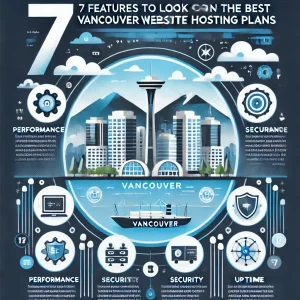A full year ago, at the close of 2016, it wasn’t going to be much of a stretch to say that cloud computing will continue to dominate headlines in the web world throughout the coming year AND beyond. Of course that turned out to be entirely true, and the ‘beyond’ at the end looks to be pretty accurate too with the fact that the Cloud is still front and centre as a newsmaker moving now into 2018.
Here at 4GoodHosting, we buy in entirely to the belief that the best Canadian web hosting provider will always be one with their thumb on the pulse of digital and web publishing technologies. Accordingly we’re always immersing ourselves in every permutation with which cloud computing is affecting the daily lives of those with vested interests in their online presence.
Look no further than the fact that that by 2020, it’s estimated that public IT cloud services will account for 58% of the $355 billion combined spending on traditional plus public cloud applications, development and deployment tools, infrastructure software, storage, and servers. Public cloud services aren’t going to be everything though, as the dominant cloud model in coming years will revolve around hybrid cloud systems.
There seems to be a consensus on what the coming year will have in store as regards the Cloud, so let’s have a look at in detail for our last blog of 2017.
Keeping An Eye on the ‘Edge’
Edge computing will become a part of your business, whether you choose it to do so or not. Many digital business projects create data that is processed more efficiently when the computing power is in close proximity to the thing or person generating it. Edge computing solutions make it impossible to embrace all the benefits of localized computing power. Those responsible for IT infrastructure and operations should understand the associated business value and risks when managing these solutions, and this applies to much more than just content. Advanced devices like IoT and IIot will be front and centre with the edge, with approximately 43% of IoT data likely being processed at the edge by the time 2020 rolls around.
Questions to ask:
- How good is your user experience?
- Are you supporting new business initiatives?
- Are you intelligently distributing resources and content to users?
- Are you able to legitimately decentralize your data centres?
Limited Order from Chaos
Chaos is truly the only word to describe security in the cloud age. Nearly every one of the ever-increasing numbers of breaches comes with conjoining problems. We can’t even define cybersecurity the same way any longer. As we move forward, don’t expect there to be a silver bullet for your security requirements. Sure, there’s been progress with predictive security analytics, machine learning, security process automation, and even security AI, but they’re not anywhere near what we’d call sufficient so far.
What you can do is make sure your security architecture isn’t complex or fragmented, and leveraging more than one security tool is a great idea. Having too many, on the other hand, will be detrimental more often than not.
Check out the new solutions which help with cloud-to-cloud security, advanced sandboxing, and even threat telemetry based on intelligent contextual engines. The best put their focus on security intelligence, data integration, and focusing on root causes around security holes. Leverage these tools, and start with them ASAP.
Control WAN for Significant Cost Savings
Today’s digital transformation and cloud computing trends are creating a need for significant changes to enterprise WAN architectures. We’re seeing the adoption of SaaS, IaaS, and other cloud services accelerating and heightening the need for significant architectural changes to WAN, and there’s a very real accompanying need to reduce the complexity and cost of WAN provisioning and management.
Some means that have shown recent promise for doing so include software-defined technologies help organizations abstract key services from hardware systems. They can be deployed for greater WAN control, content delivery optimization, and for better remote data centre controls as well. The best ones are entirely flexible, agile, easy to deploy, and help optimize the way you deliver content.
You’ll be able to closely monitor user performance and experience, how your WAN is operating, optimize specific applications, and I highly recommend you take a look at these systems. Deploying a couple of virtual appliances to test out new WAN solutions isn’t difficult or overly expensive.
Pay Serious Attention to IoT, Data, and the Connected World
Estimates suggest that around 10% of enterprise-generated data is currently created and processed outside a traditional centralized data centre or cloud. Get ready for that number to reach 50% within 4 years. Growth in machine-to-machine connections and applications is also driving new data analytics needs in response to the trend. This is why it’s critical to understand IoT technologies, as the applications tend to be night and day different.
The bulk of them and all their ins and outs would be an entire separate post on its own, but the most important thing to understand is that you will be creating more data. That in itself likely isn’t surprising, but what may well be is that most of this data will be ephemeral in nature and neither saved nor stored.
Long story short? There will be approximately 10 times more useful data being created (than will be used in the near future. This will prompt advances in machine learning, data intelligence, and even IoT analytics engines. Be ready for more connected devices that leverage their data much more judiciously.
Welcome the Mobile Workforce
Our level of connectedness - independent of location - will only continue to increase. A recent study showed that leveraging apps and mobile tools helps with improved employee productivity. Some findings:
- 30% of respondents said apps improve business processes
- 23% reported having apps increasing their productivity
- 20% said it gave them a competitive advantage
- 14% reported greater satisfaction as employees
No shocker here, but the global mobile workforce is set to increase, and in fact it’s forecast to grow from 1.45 billion in 2016 to 1.87 billion in 2022, a jump from 38 to 42.5% of the global workforce.
Those of you who will be keeping up best will be deploying new wireless technologies that help users connect and be productive, and delivering apps, desktops, and services to users contextually. In the bigger picture, organizations that embrace their user’s connected state will see the biggest benefits from enabling a more productive mobile workforce. Organizations not on the public cloud will be increasingly isolated from the world of tech innovation.
In summary, it’s important to define what cloud means for you organization and user base. This year you should make sure to work with solutions that fit your specific use-cases, aligning business processes with strategic IT goals, and working with end-users to understand collectively how to best manage your resources.
From all of us at 4GoodHosting, all the best to all of you in 2018.












